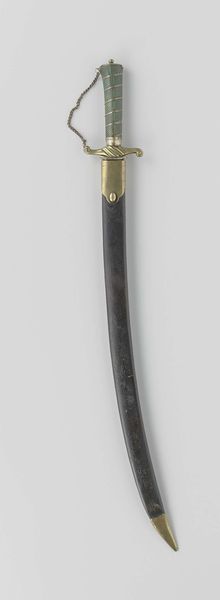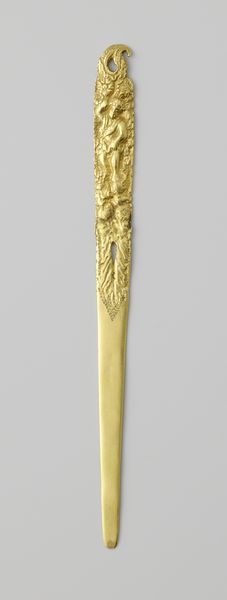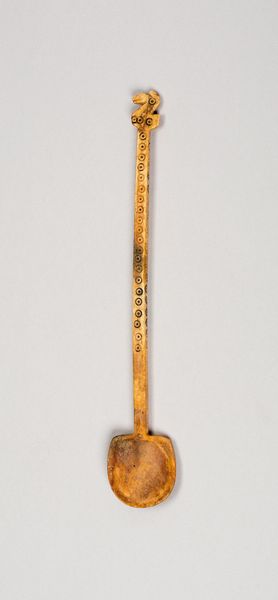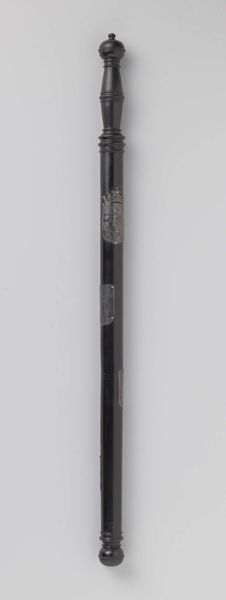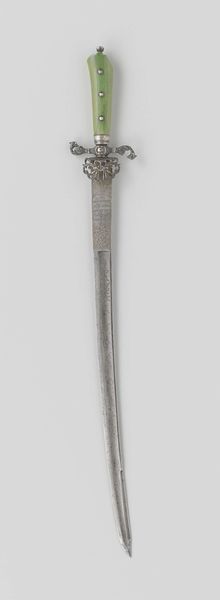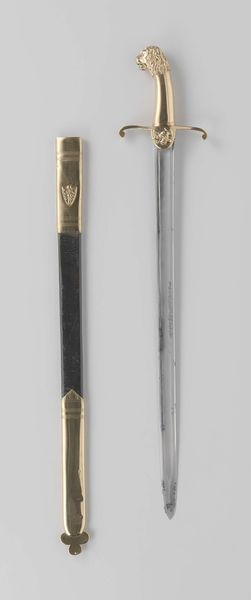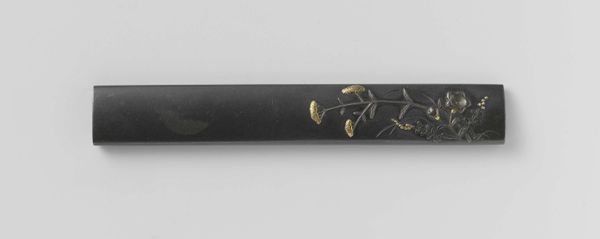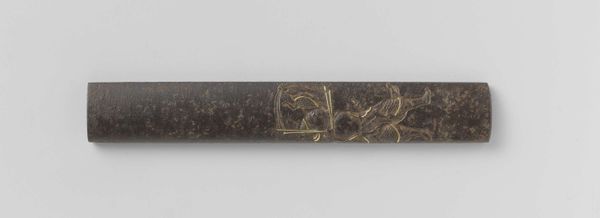
metal, sculpture, wood
#
metal
#
sculpture
#
wood
#
history-painting
Dimensions: length 100.5 cm, length 17.5 cm, length 83 cm, width 2.2 cm
Copyright: Rijks Museum: Open Domain
Editor: Here we have a Dutch officer's sword, dating from somewhere between 1820 and 1855. The materials listed are metal and wood. The whole thing appears very delicate, and its surface is engraved with golden decorative detailing. What stands out to you when you look at it? Curator: I notice first the clear verticality, which suggests a powerful sense of order and direction. Observe how the hilt, made of metal, contrasts against the darker wood. Then, as your eye moves down the blade, the golden floral patterns guide it. The blade itself seems to bisect the space. Do you perceive a dynamic tension created by this sharp division? Editor: I can see that. It is both ornamental and quite deadly! The hilt also seems to serve as a counterpoint to the pointed tip. Are you suggesting that the two halves, hilt and blade, embody opposing forces, creating some type of harmony? Curator: Precisely. Consider the textures, how metal gives way to carved wood, then the floral patterns set against the polished metal of the blade itself. This arrangement establishes a cadence, creating visual rhythm. The sword's beauty lies in its balance, a sort of dialogue between form and potential. Does that resonate with your interpretation? Editor: That’s a fascinating way of looking at it. I was more focused on its historical context and symbolic weight. I see what you mean now. It really invites a slower, closer inspection, thinking of it as a series of carefully balanced visual elements. Thank you for sharing! Curator: My pleasure. Remember, form provides structure for exploring how materials contribute meaning to artworks. By paying close attention to formal elements like texture, balance, and rhythm, we gain richer understandings of artworks.
Comments
No comments
Be the first to comment and join the conversation on the ultimate creative platform.

